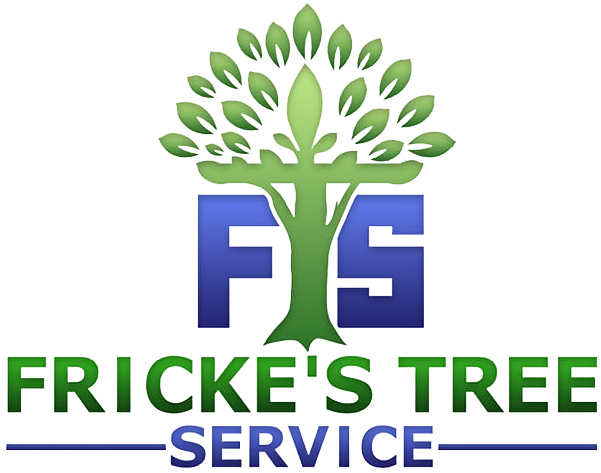Fricke's Tree Service
Preparing Your Trees for Hurricane Season with Proper Trimming
As hurricane season approaches, it's crucial to take proactive steps to protect your property and ensure the safety of your trees. Proper trimming and maintenance can significantly reduce the risk of damage during severe weather events. In this blog post, we will explore effective strategies for preparing your trees for hurricane season, focusing on the importance of trimming, the best practices to follow, and how to assess your trees' health. By understanding these elements, you can create a safer environment for your home and landscape.
The Importance of Tree Trimming
Tree trimming is not just about aesthetics; it plays a vital role in maintaining the health and stability of your trees. Here are some key reasons why trimming is essential:- Reduces Wind Resistance: Thinning out the canopy allows wind to pass through, reducing the likelihood of branches breaking or trees uprooting. This is particularly important in hurricane-prone areas where strong winds can wreak havoc on poorly maintained trees.
- Removes Dead or Weak Branches: Dead or damaged branches are more likely to break during a storm, posing a risk to your property and safety. By removing these branches ahead of time, you can prevent potential injuries and property damage.
- Encourages Healthy Growth: Regular trimming promotes new growth and helps maintain the overall health of the tree. Healthy trees are more resilient and better equipped to withstand harsh weather conditions.
- Improves Aesthetics: A well-trimmed tree enhances the beauty of your landscape, making it more enjoyable year-round. A visually appealing yard can also increase your property value.
When to Trim Your Trees
Timing is crucial when it comes to tree trimming. Here are some guidelines to help you determine the best time:- Late Winter to Early Spring: This is generally the best time for trimming most trees, as they are still dormant and can recover quickly. Trimming during this period minimizes stress on the tree.
- Before Hurricane Season: Aim to complete trimming at least a month before hurricane season begins to allow trees to heal. This gives the tree time to recover from any cuts and strengthens its structure.
- Avoid Trimming During Active Hurricane Season: Trimming during this time can stress the tree and make it more vulnerable. It's best to wait until the season is over to avoid unnecessary risk.
How to Properly Trim Your Trees
Proper trimming techniques are essential to ensure the health and longevity of your trees. Follow these steps for effective trimming:- Assess the Tree: Look for dead, damaged, or crossing branches that need to be removed. A thorough assessment will help you identify the areas that require attention.
- Use the Right Tools: Invest in quality pruning shears, loppers, and saws to make clean cuts. Using the right tools not only makes the job easier but also ensures that the cuts are clean, which helps the tree heal faster.
- Make Clean Cuts: Cut at a slight angle just above a bud or branch to promote healing. Clean cuts reduce the risk of disease entering the tree.
- Don’t Over-Prune: Avoid removing more than 25% of the tree’s canopy in one season to prevent stress. Over-pruning can lead to a weakened tree that is more susceptible to damage.
- Consider Professional Help: If the tree is large or near power lines, hire a certified arborist for safe trimming. Professionals have the expertise and equipment to handle complex trimming tasks safely.
Assessing Tree Health
Before trimming, it’s essential to assess the overall health of your trees. Here are some signs to look for:- Leaf Discoloration: Yellowing or browning leaves can indicate stress or disease. Healthy leaves should be vibrant and green.
- Cracks in the Bark: Deep cracks may suggest structural issues or disease. Inspect the bark for any signs of damage that could compromise the tree's integrity.
- Unusual Growth Patterns: Leaning or uneven growth can indicate root problems. Trees should grow upright and evenly; any deviation may require further investigation.
- Pests or Fungi: Look for signs of infestation or fungal growth, which can weaken the tree. Early detection of pests can prevent more significant issues down the line.
Additional Tips for Hurricane Preparedness
In addition to trimming, consider these additional tips to prepare your trees for hurricane season:- Mulch Around the Base: Adding mulch can help retain moisture and protect roots. Mulching also suppresses weeds and improves soil health.
- Water Regularly: Ensure your trees are well-hydrated leading up to hurricane season. A well-hydrated tree is more resilient to stress and damage.
- Secure Loose Branches: Remove or secure any branches that could become projectiles in high winds. This proactive measure can prevent injury and property damage.
- Inspect Surrounding Areas: Clear away debris and potential hazards that could damage your trees. A clean area reduces the risk of falling objects during a storm.
Conclusion
Preparing your trees for hurricane season through proper trimming and maintenance is essential for protecting your property and ensuring the safety of your landscape. By following the guidelines outlined in this post, you can help your trees withstand the challenges of severe weather. Remember, a little effort now can save you from significant damage later. Stay proactive, and your trees will thrive through hurricane season and beyond. Investing time in tree care not only enhances the beauty of your property but also contributes to a safer environment for you and your family.SHARE POST
RECENT POSTS
Interested in Our Services?
Get in touch today to discuss your next project and we will happy to answer any questions and provide you with a no-obligation FREE Estimate.







